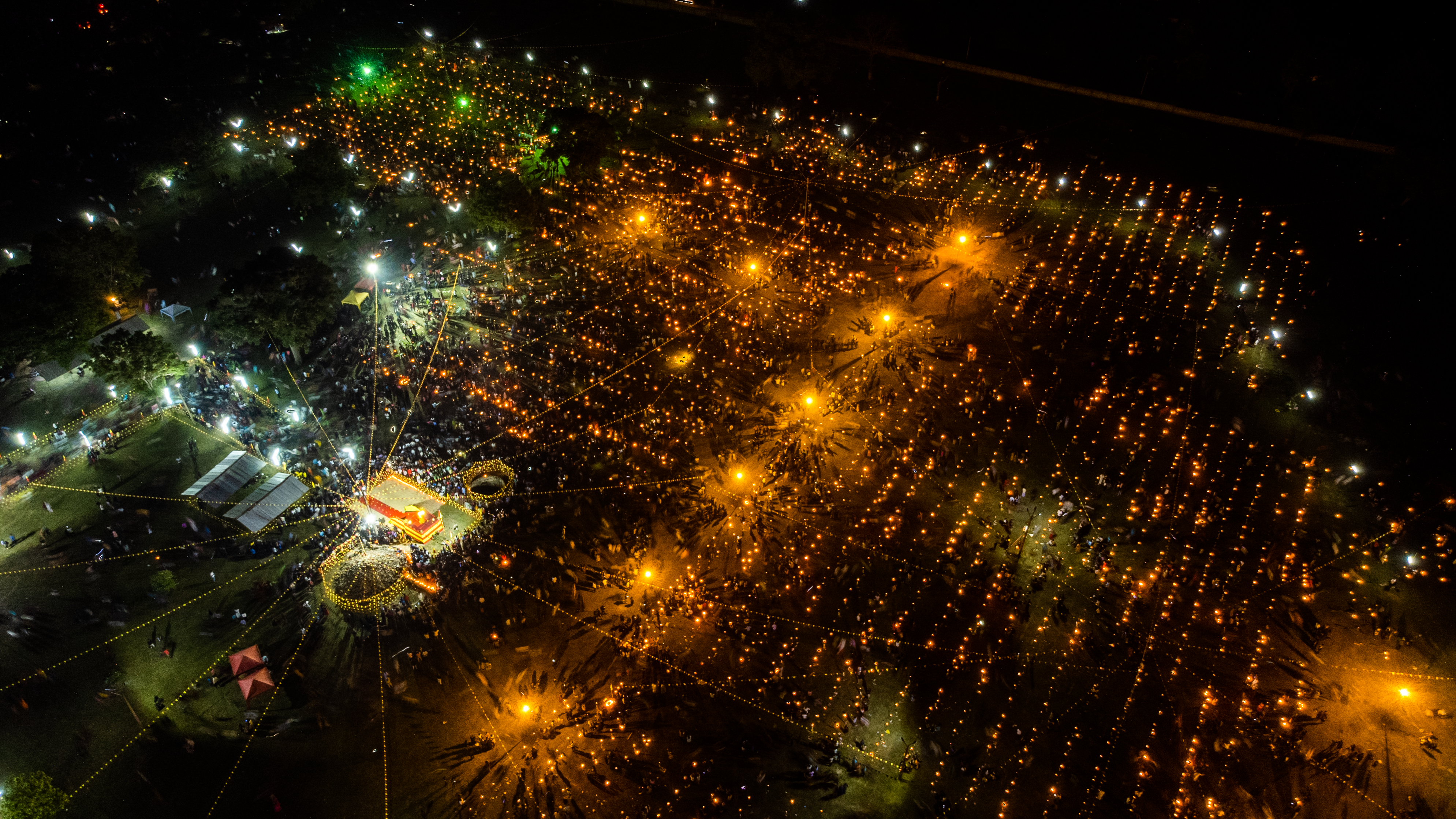
Last week, thousands of Tamils, from the political strongholds in Jaffna, the militarised heartlands of the Vanni, to the allegedly contested territories of Amparai, lit up destroyed LTTE cemeteries to pay tribute to those who laid down their lives in the armed struggle. Since 2016, when Tamils reclaimed the Kanagapuram Thuyilum Illam in Kilinochchi to hold Maaveerar Naal publicly for the first time since 2012, when Tamil students were beaten by the Sri Lankan army for attempting to mark the day, the commemorations have been growing in scale each year, disrupted only by the lockdowns of the global pandemic. This year was the largest yet, with events reported in at least thirty locations across the eight districts of the North-East.
While there were several reported disturbances caused by Sri Lankan police and military forces, organisers across the homeland forged ahead, laying the groundwork by clearing destroyed LTTE cemeteries, recovering headstones from the rubble, and setting up memorial installations dedicated to remembering each and every martyr. The synchronicity of the commemorations, starting with the lighting of the sacrificial flame to the ‘Thuyilum Illam’ song ringing out at exactly 18.05 in every location, illustrates the enduring intimacy between the armed struggle and the political aspirations of the Tamil people. These are not simply private memorials carried out by family members of the dead, but a collective reclamation of the Tamil liberation struggle, and a steadfast preservation of traditions established under the auspices of the LTTE.
The Tamil nation, despite the overwhelming forces that have attempted to browbeat it into submission since the end of the armed conflict thirteen years ago, has continued to demonstrate its unbending will to self-determination. All facets of Tamil struggle in the post-2009 context - the families of the disappeared, land protesters, opposition to Sinhalisation, political autonomy, accountability and justice for genocide - have remained unmoved by the inadequate gestures made by the Sri Lankan state, and often pushed by the international community, in its attempts to demobilise the popular momentum behind them. Neither the sticks - military occupation, arrests, infiltrations, threats, physical attacks, archaeological fabrications - nor the carrots - infrastructure development, countless commissions, offers of compensation, constitutional amendments, the Office for Missing Persons - have succeeded in breaking that will.
Meanwhile, Sri Lankans, despite months of highly publicised mobilisation against its corrupt leaders, have failed to surmount a significant challenge to the status quo. Although the monstrous reality of the Sinhala state, known all too well to Tamils, is slowly dawning on the Sinhala community, the aragalaya has all but fizzled out, having achieved little more than a change in figurehead to oversee the brutal and oppressive policies that have kept the island in a perpetual state of crisis. While Tamils were berated for failing to show adequate support to the southern protests, their scepticism echoed the ominous words of LTTE leader Velupillai Prabhakaran in his final Maaveerar Naal speech in 2008: “No political transformation has taken place during the last sixty years in the Sinhala nation. Hoping it will happen in the future is futile.” Animated by economic grievance, the aragalaya failed to reckon with the root causes of the island’s crises, namely the destructive ideology of Sinhala Buddhist nationalism, of which the protest’s target - the Rajapaksa dynasty - was merely a symptom.
In the same 2008 speech, Prabhakaran reminded the world that “the armed violent path was not our choice - it was forced upon us by history.” The Tamil people are deeply conscious of their place in history, and have for decades fought to take control of their future. The nonchalance with which the songs of the Tamil liberation struggle were reverberating around Amparai, Batticaloa, Jaffna, Kilinochchi, Mannar, Mullaitivu, Trincomalee, Vavuniya and even the islets, epitomises how the people of Tamil Eelam are no longer interested in pacifying Sinhala nationalism. Instead, they continue to find strength in each other and in the unwavering support of the global Tamil diaspora, to seize this historical moment of uprising. Their tradition of revolutionary struggle will continue to manifest in the resistance embodied daily by those fighting for Tamil demands, from the mothers of the disappeared seeking justice, to the Tamil students confronting the Sri Lankan military. The Tamil nation’s determination to continue surviving, and to one day thrive, despite a state ideologically devoted to its eradication, springs eternally from the memory of the first fighter to lay down his life for liberation on November 27, forty years ago, and of the thousands of Maaveerar who followed.
Photo: Maaveerar Naal at Kanagapuram Thuyilum Illam, 2022. Tamil Guardian.
We need your support
Sri Lanka is one of the most dangerous places in the world to be a journalist. Tamil journalists are particularly at threat, with at least 41 media workers known to have been killed by the Sri Lankan state or its paramilitaries during and after the armed conflict.
Despite the risks, our team on the ground remain committed to providing detailed and accurate reporting of developments in the Tamil homeland, across the island and around the world, as well as providing expert analysis and insight from the Tamil point of view
We need your support in keeping our journalism going. Support our work today.
For more ways to donate visit https://donate.tamilguardian.com.

